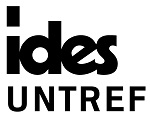THE RELATIONSHIP BETWEEN INFLATION AND GROWTH
INFLATION THRESHOLD ESTIMATE FOR ARGENTINA
Keywords:
Inflation, Economic growth, Non linearity, Threshold effectsAbstract
The purpose of this paper is to present a methodology to identify the existence of threshold effects in the relationship between inflation and economic growth of Argentina, using non linear econometric procedures for estimation and inference. The empirical findings show that the threshold level of inflation above which inflation significantly slows growth is estimated at 12,9%. The level of inflation between 7,5% and 12,9% has no relevant effects on economic growth. The negative and statistically relevant relationship between inflation and growth is robust with respect to the econometric procedures considered, the exclusion of high-inflation observations, and the alternative specifications.
Downloads
References
AYDIN, C., ESEN, Ö. y BAYRAK, M. (2016). “Inflation and Economic Growth: A Dynamic Panel Threshold Analysis for Turkish Republics in Transition Process”, Procedia - Social and Behavioral Sciences, N° 229, pp. 196-205.
BENIGNO, P. y RICCI, L. (2011). “The Inflation-Output Trade- Off with Downward Wage Rigidities”, American Economic Review, vol. 101, Nº 4, junio, pp. 1436-1466.
BRIAULT, C. (1995). “The Costs of Inflation”, Monetary Assessment and Strategy Division, Bank of England Quarterly Bulletin, Nº 35, febrero.
CAI, J. (1994). “A Markov Model of Switching-Regime ARCH”, Journal of Business & Economic Statistics, vol. 12, Nº 3, pp. 309-316.
CASELLI, F., ESQUIVEL, G. y LEFORT, F. (1996). “Reopening the Convergence Debate: A new Look at Cross-Country Growth Empirics”, Journal of Eco- nomic Growth, vol. 1, Nº 3, pp. 363-389.
CHATTERJEE, S., HANDCOCK, M. S. y SIMONOFF, J. S. (1995). A Casebook for a First Course in Statistics and Data Analysis. Nueva York: Wiley.
DIEBOLD, F. X. y RUDEBUSCH, G. D. (1996). “Measuring Business Cycles: a Modern Perspective”, The Review of Economic and Statistics, vol. 78, Nº 1, pp. 67-77.
DURLAND, J. M. y MCCURDY, T. H. (1994). “Duration-dependent Transitions in a Markov Model of U.S. GNP growth”, Journal of Business and Economic Statistics, vol. 12, Nº 3, julio, pp. 279-288.
ESPINOZA, R., HYGINUS, L. y ANANTHAKRISHNAN, P. (2010). “Estimating the Inflation-Growth Nexus−A Smooth Transition Model”, IMF Working Paper, WP/10/76.
FANELLI, J. M. y FRENKEL, R. (1995). “Micro-macro interaction in economic development”, UNctAd Review, Nº 1, pp. 129-154.
FILARDO, A. J. (1994). “Business-cycle Phases and Their Transitional Dynamic”, Journal of Business and Economic Statistics, vol. 12, pp. 299-308.
FRANCQ, C. y ROUSSIGNOL, M. (1997). “On white Noises Driven by Hidden Markov Chains”, Journal of the Time Series Analysis, vol. 18, Nº 6, pp. 553-578.
GOLDFELD, S. M. y QUANDT, R. E. (1972). Non-linear Methods in Econometrics. Amsterdam: North-Holland Publ. Co.
GOODWIN, T. H. (1993). “Business-cycle analysis with a Markov-switching-model”, Journal of Business and Economic Statistics, vol. 11, Nº 3, pp. 331-339.
HAMILTON, J. D. (1989). “A new Approach to the Economic Analysis of Nonstationary Time Series and the Business Cycle”, Econometrica, vol. 57, Nº 2, pp. 357-384.
HANSEN, B. (1999). “Threshold effects in nondynamic panels: estimation, testing and inference”, Journal of Econometrics, vol. 93, pp. 345-368.
——— (2000). “Sample Splitting and Threshold Estimation”, Econometrica, vol. 68, Nº 3, pp. 575-603.
IBARRA, R. y TRUPKIN, D. (2016). “Reexamining the relationship between inflation and growth: Do institutions matter in developing countries?”, Economic Modelling, vol. 52, Part B, pp. 332-351.
KERMER, S., BICK, A. y DIETER, N. (2013). “Inflation and Growth; new evidence from a dynamic panel threshold analysis”, Empirical Economics, vol. 44, Nº 2, pp. 861-878.
KHAN, M. S. y SENHADJI, A. S. (2001). “Threshold effects in the relationship between inflation and growth”, IMF Staff Papers, vol. 48, Nº 1.
MAIA, J. L. y KWEITEL, M. (2006). “Relación inflación-crecimiento: estimación de umbral para la Argentina”, Dirección Nacional de Programación Macroeconómica, Ministerio de Economía y Finanzas Públicas.
LI, M. (2006). “Inflation and economic growth: thresholds effects and transmission mechanisms”. Edmonton: Department of Economics, University of Alberta.
MORTAZA, G. y AHMED, S. (2005). “Inflation and economic growth in Bangladesh: 1981-2005”, Bangladesh Bank Working Paper Series, WP 0604.
MUBARIK, Y. A. (2005). “Inflation and Growth: an estimate of the threshold level of inflation in Pakistan”, State Bank of Pakistan, Research Bulletin, vol. 1, Nº 1, pp, 35-44.
NDORICIMPA, A. (2017). “Threshold Effects of Inflation on Economic Growth in Africa: Evidence from a Dynamic Panel Threshold Regression Approach”, African Development Bank Group, Working Paper Nº 249, enero.
NEWEY, W. K. y WEST, K. D. (1987). “A Simple, Positive Semi-Definite, Heteroskedasticity and Autocorrela- tion Consistent Covariance Matrix”. Econometrica, vol. 55, Nº 3, pp. 703-708.
PESARAN, M. H. y POTTER, S. M. (1997). “A Floor and Ceiling Model of US output”, Journal of Economic Dynamic and Control, vol. 21, Nos 4-5, pp. 661-695.
POLLIN R. y ZHU, A. (2005). “Inflation and economic growth: a cross country non linear analysis”. Amherst: Political Economy Research Institute, University of Massachusetts.
QUANDT, R. E. (1958). “The Estimation of Parameters of Linear Regresion System Obeying Two Separate Regimes”, Journal of the American Statistical Association, Nº 55, pp. 873-880.
SAREL, M. (1995). “Non linear effects of inflation on economic growth”, IMF Working Paper, WP/95/56.
SHILLER, R. (1996). “Why do people dislike inflation”, NBEr Working Paper, 5539.
SICHEL, D. (1994). “Inventories and the three Phases of the Business Cycle”, Journal of Business y Economic Statistis, vol. 12, Nº 3, pp. 269-277.
SIDRAUSKI, M. (1967). “Rational choice and patterns of growth in a monetary economy”, American Economy Review, vol. 57, Nº 2, pp. 534-544.
SIMONOFF, J. (1996). Smoothing methods in statistics. Nueva York: Springer-Verlag.
STOCKMAN, A. C. (1981). “Anticipated inflation and the capital stock in a cash-in-advance economy”, Journal of Monetary Economics, vol. 8, Nº 3, pp. 387-393.
SWEIDAN, O. D. (2004). “Does inflation harm economic growth in jordan? An econometric analysis for period 1970-2000”, International Journal of Applied Econometrics and Quantitative Studies, vols. 1-2, pp. 41-66.
TIAO, G. C. y TSAY, R. S. (1994). “Some Advances in non-linear and Adaptive Modelling in Time-series”, Journal of Forecasting, vol. 13, Nº 2, pp. 109-131.
TOBIN, J. (1965). “Money and economic growth”, Econometrica, vol. 33, Nº 4, pp. 671-684.
TONG, H. y LIM, K. S. (1980). “Threshold Autoregression, Limited Cycles and Cyclical Data”, Journal of the Royal Statistical Society, Series B, Nº 42, pp. 245-292.
VÁSQUEZ CORDANO, A. L. (2003). “Umbrales de inflación y crecimiento económico en el Perú: predicción e inferencia en un contexto de estabilidad macroeconómica, 1992-2002”, Banco Central de Reserva del Perú, Concurso de Investigación para Jóvenes Economistas 2002-2003.
Downloads
Published
How to Cite
Issue
Section
License

This work is licensed under a Creative Commons Attribution-NonCommercial-ShareAlike 4.0 International License.
Manuscript acceptance by the Journal implies the simultaneous non-submission to any other journal or publishing house, and the non-exclusive transmission of the author´s patrimonial rights in favor of the editor, who allows the post-print version use, under the Licencia Creative Commnos Atribución-NoComercial-Compartir Obras Derivadas Igual 4.0 Internacional (CC-BY-NC.SA 4.0) (http://creativecommons.org/licences/by-nc-sa/4.0/deed.es). Articles can be shared, copied, distributed, modified, altered, transformed into a derivative work, executed and publicly communicated, provided a) the authors and the original publication (Journal, Publisher and URL) are mentioned, b) they are not used for commercial purposes, c) the same terms of the license are maintained.
It is hereby stated that the mentioned manuscript has not been published and that it is not being printed in any other national or foreign journal.
The authors hereby accept the necessary modifications, suggested by the reviewers, in order to adapt the manuscript to the style and publication rules of this Journal.










